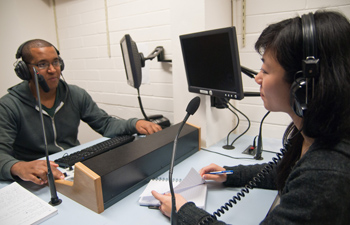An innovative Australian public journalism project has partnered student reporters and the Australian Broadcasting Corporation with a refugee support agency and a social media startup.
The aim of the project, #ReportingRefugees, was to tackle problematic media coverage of asylum seekers and refugees in a volatile political climate in parallel with educating students to connect with a “citizens’ agenda.” The result was a student takeover of the airwaves in Australia’s national capital and a fundamental shift in attitudes.
MediaShift correspondent Julie Posetti anchored the project at the University of Canberra where she teaches journalism. This is the first in her two-part series on #ReportingRefugees.
Problem: Divisive & Xenophobic National Debate
For the past 15 years, racist and xenophobic political memes have dominated public discussion of refugees and asylum seekers in Australia, with asylum seekers who arrive by boat demonized as threatening aliens by politicians whose divisive messages are fanned and fed by inflammatory headlines and tabloid TV.
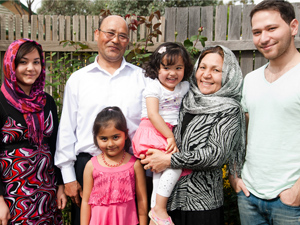
In this climate, and on the back of involvement in a substantial national research project on the reporting of multiculturalism (which led to me theorizing about the potential transformative impact of minority encounters on journalists), I decided to embark on a public journalism project with my final-year University of Canberra broadcast journalism students.
The end result was two hours of radio journalism, fueled by collaboration and social media, that gave a much-needed voice to refugees, a better understanding for the public of the complicated issues surrounding them, and important lessons for those of us working on the project.
Journalism Partnerships For Change
#ReportingRefugees was built on partnerships that I forged with 666 ABC Canberra, the ABC’s radio station in the Australian capital; Canberra Refugee Support, the city’s best-known organization for refugees and asylum seekers; OurSay, an innovative crowdsourcing startup; and the School of Music at the Australian National University, also based in Canberra.
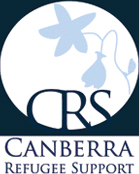
I made my first approach to CRS, and their initial response reflected the impact of xenophobic political campaigns and media stereotyping: They were reluctant to get involved. CRS President Geoff McPherson said concerns about resourcing the project were also paramount. But I persisted, pursuing meetings and arguing the merits of interventions in journalism education and public journalism approaches in tackling problematic reporting of marginalized communities. The proposal was for CRS to facilitate contact between student journalists and asylum seeker-refugee clients and provide advice on relevant policy and community programs, with the aim of minimizing any potential harm to vulnerable interviewees and assisting in the development of culturally intelligent reporting on a complex and often poorly reported issue.
Ultimately, just a fortnight before the project kicked off, CRS agreed to participate. “The judgment of the CRS board was that the potential return on this project far outweighed the risks and (we) decided to proceed,” McPherson said, reflecting on the project at its conclusion.
Collaborating with Australia’s Public Broadcaster
By contrast, the ABC was keen to be involved from the outset. They were even prepared to hand over two hours of airtime on their main Canberra radio station to the students. They agreed to allow the students — under the joint editorial supervision of the ABC, me and my tutors — to report, produce and present a radio special devoted to #ReportingRefugees which was scheduled for broadcast on November 27 last year — three months from the start of the project.
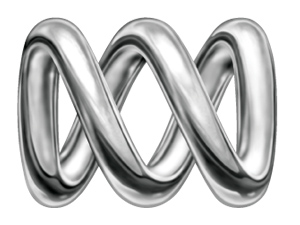
Jordie Kilby, ABC 666 Canberra content director, explained the network’s motivation for involvement: “We hoped for an insightful look at the local community of refugees living in the Canberra region; we wanted to build on our relationships with local refugees and asylum seekers and the community groups that help and support them. We also hoped the project would give us an opportunity to look at some future journalists and their ideas and work.”
Original Student Compositions Score #ReportingRefugees
By this stage, my ANU School of Music collaborator, Jonathan Powles, had agreed to offer his students the opportunity to produce original scores to accompany my journalism students’ stories. Apart from being an interesting cross-disciplinary education collaboration and a potentially rewarding creative merger for broadcaster, teachers and students alike, the provision of original music for the planned radio program meant that the ABC would also be able to podcast the show. (Copyright laws in Australia prevent the podcasting of commercial music broadcast on radio.)
Giving Citizens a Say
Finally, I decided to approach OurSay — a Melbourne startup which partners with media organizations, universities and NGOs (non-governmental organizations) to crowdsource questions designed to address the “citizens’ agenda.” They jumped at the chance to be involved, and we launched the project’s OurSay page which asked the public to identify the questions they most wanted answered by a panel of experts on asylum seeker-refugee policy during the ABC broadcast.
OurSay’s CEO, Eyal Halamish, explained the role of the platform in the project: “Especially on such a contentious issue as that of refugees and asylum seekers, where the mainstream media latch onto sensationalist, short-termist news instead of taking a broader view, a social tool such as OurSay can help set the agenda more effectively and help express what the public feels about an issue, as sourced from their own questions and comments.” It worked like this: Over the course of a month, OurSay users were asked to submit the questions they most wanted put to the panel, and the top five questions were selected by popular vote on the site.
The #ReportingRefugees Curriculum
With these #ReportingRefugees building blocks in place, I was able to finalize the structure of the project within the syllabus. This was no easy task! Trying to balance learning outcomes and university assessment policies against real-world media deadlines is always tricky. But doing so on a project seeking to break new ground through multiple public journalism partnerships, on a complex and sensitive reporting assignment, proved to be the most challenging teaching project I’ve ever been involved with. Fortunately, it also emerged as the most rewarding experience of my journalism education career.
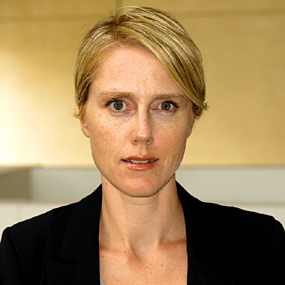
#ReportingRefugees became the foundation of the Advanced Broadcast Journalism unit (a class of 50 students) I convene at UC. I gave lectures on public journalism (featuring the work of professor Jay Rosen and others) and reporting trauma in the social media age. I also devoted a lecture to a live Skype interview with the ABC’s South East Asia correspondent, Zoe Daniel, whose beat includes the massive refugee camps and asylum seeker communities of that region.
The major assessment required students to work in reporting duos networked via loosely themed production units, on original, long-form audio or audio/video stories about refugees-asylum seekers (or policies and programs pertaining to them) which would compete for selection in the final radio program. Additionally, they had to produce images and text to accompany their stories for online publication. They were encouraged to speak with, not just about, refugees-asylum seekers and to explore personal stories and angles that the media had largely overlooked. Some reporting duos were assigned to refugee-asylum seeker families and community services facilitated by CRS, while others independently identified stories and sources.
Assessing Audience Engagement and Reflective Practice
Additionally, the students were required to maintain Twitter feeds (with a focus on community building around content, crowdsourcing and content distribution) as part of an “audience engagement” assessment. They also needed to participate in Facebook groups dedicated to editorial management. The final assessment involved publication of an academically grounded reflective practice blog which required the students to critically analyze the project, their involvement in it and their experiences of it, with reference to scholarly readings.
Students’ Perspective
So, what did the students think of the project at the start? Many have admitted they were daunted by the theme and the workload when they first heard about it. One, Ewan Gilbert, conceded he was initially a tad perplexed: “I went into the assignment thinking it was all a bit over the top.” But Gilbert, now a cadet journalist with the ABC, clearly understood the project’s purpose in retrospect: “I think one of the biggest barriers people face when it comes to understanding refugee issues, is that most Australians have probably never met one,” he blogged. “Putting a face to an issue was so important to helping my understanding of the problems. You learn to treat the issue with humanity. You learn to see refugees as people and quite often extremely vulnerable people at that. If the whole refugee debate didn’t have any relevancy to me before, it certainly does now.”
Another student, Grace Keyworth, who was already working in the Canberra Press Gallery as a videographer when the project began, wrote that #ReportingRefugees was an important and timely intervention.
“I have been present at countless press conferences this year where the discussion of asylum seekers and refugees was completely dehumanized. There was a lot of talk of numbers, figures and ‘processing’ them like they’re a piece of meat, but hardly any of names, occupations or their reasons for leaving their countries,” she lamented. “It shows that as a society, we haven’t progressed beyond the racial discrimination towards immigrants that has plagued our country since federation.”
Opening Up Journalism — Critical Reflection via Social Media
The students were encouraged to openly reflect, through their social media activity, on their pre-conceived ideas about the refugee-asylum seeker issue and broadcast reporting conventions as they worked on their stories. They had to navigate very complex issues — such as balancing the need to avoid re-traumatizing refugee interviewees who’d survived torture against the need for editorial transparency and independence. Many encountered significant journalistic obstacles — from paternalism within some organizations which led (inappropriately) to one service provider refusing its refugee clients permission to speak, to nervous interviewees backing out of stories close to deadline. But in every case, these experiences delivered important learning outcomes — about the need for sensitivity and informed consent in reporting on refugees-asylum seekers, and about the need for journalistic perseverance and resilience when confronted with problems that threaten to derail stories in which many hours work have been invested.
There were logistical hurdles to mount, too. The collaborative editorial management of the project with the ABC meant that assessment deadlines had to be interwoven with ABC production deadlines. And multiple classroom visits by the busy ABC content director needed to be scheduled across four tutorials, which were timetabled for only three hours each per week.
Once the students had filed their rough-cut stories for assessment, the difficult process of selecting the content for broadcast and web upload commenced. I shortlisted stories from each tutorial with my tutors (Phil Cullen and Ginger Gorman, both of whom are experienced ABC broadcasters) but the ABC’s Jordie Kilby was responsible for selecting the final line-up of 10 stories. Meanwhile, we auditioned potential student presenters, and student executive producers attached to each tutorial began wrangling students to deliver final cut radio and web stories.
Putting #ReportingRefugees on Air
Ultimately, the students broadcast two hours of moving, human radio with a focus on personalized stories, situational reports on community programs such as a psychological service which treats traumatized child refugees, explanatory journalism that unpacked highly complex and sensitive themes, and an intelligent panel discussion, featuring the former Commonwealth Ombudsman and the UNHCR’s representative in Australia, that addressed the questions crowdsourced via OurSay in a way that allowed misconceptions to be powerfully countered.
As the program aired, students, listeners and ABC staff participated in a lively Twitter discussion triggered by the stories, aggregated by the #ReportingRefugees hashtag.
Additionally, the ABC website continues to host a bundle of additional student reports produced for the project, along with a podcast of the radio special (Hour 1 & Hour 2).
I’ll focus in more detail on the impact of the project on those involved, its reception by audiences, and the implications for journalism education in part two of this #ReportingRefugees series, but this quote from international student Linn Loken, sums up the value of the project and makes my own very substantial investment in time, energy and effort in its execution seem worthwhile:
“Knowing a few refugees now, this is not just a word to me anymore. When I hear the word REFUGEE mentioned, I think about the people I talked to during this project and I can see their faces.”
Julie Posetti is an award-winning journalist and journalism academic who lectures in radio and television reporting at the University of Canberra, Australia. She’s been a national political correspondent, a regional news editor, a TV documentary reporter and presenter on radio and television with the Australian national broadcaster, the ABC. Her academic research centers on journalism and social media, on talk radio, public broadcasting, political reporting and broadcast coverage of Muslims post-9/11. She’s currently writing her PhD dissertion on ‘The Twitterisation of Journalism’ at the University of Wollongong. She blogs at Twitter.
